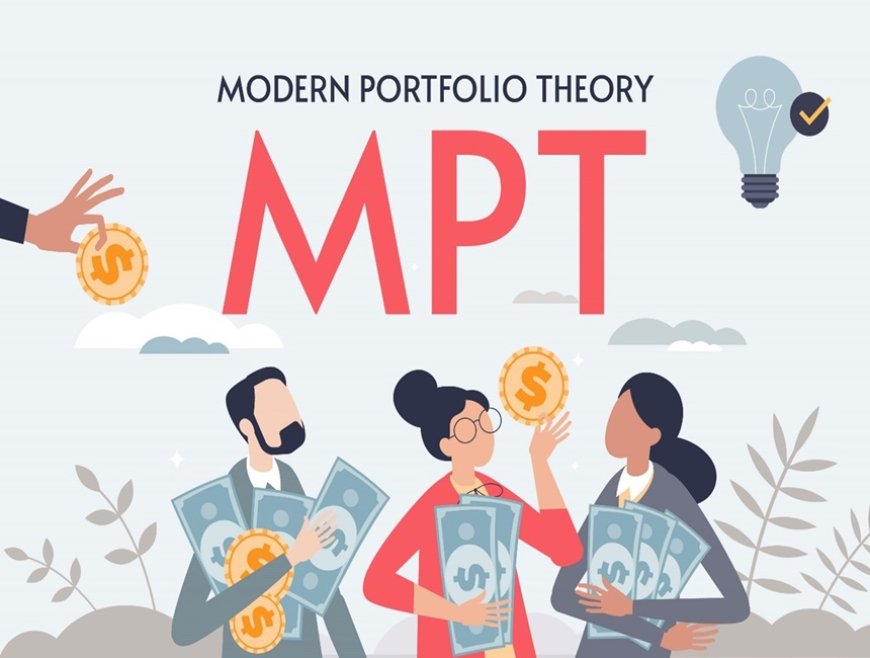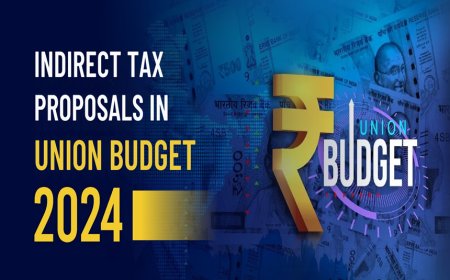Modern Portfolio Theory (MPT): Building Your Optimal Portfolio
Unlock the power of Modern Portfolio Theory (MPT) to build your optimal investment portfolio in the Indian market. Learn how diversification, risk management, and asset allocation can help you maximize returns and achieve your financial goals. This comprehensive guide explains MPT concepts and provides practical tips for Indian investors.

Modern Portfolio Theory (MPT) is a cornerstone of investment management. It provides a framework for constructing an investment portfolio that aims to maximize returns for a given level of risk. Developed by Nobel laureate Harry Markowitz in the 1950s, MPT has since become a widely used tool by financial advisors and individual investors alike.
Understanding MPT: The Core Tenets
At its heart, Modern Portfolio Theory is all about diversification and managing risk. The central idea is that by thoughtfully spreading investments across a variety of asset types, investors can decrease the overall risk of their portfolio without necessarily giving up potential returns. Let's delve deeper into the core principles that form the foundation of MPT:
1. Diversification: Your Financial Safety Net
The adage "don't put all your eggs in one basket" perfectly captures the essence of diversification in Modern Portfolio Theory. It's a fundamental principle that aims to safeguard your investments by strategically spreading them across a wide range of assets.
Why Diversification Matters
Think of your investments like a team sport. You wouldn't want a team composed solely of goalkeepers, would you? Similarly, relying on a single asset or sector leaves your portfolio vulnerable. Diversification acts as a shock absorber, cushioning your investments against unforeseen events. Here's how it works:
- Non-Correlation: Different asset classes tend to react differently to economic shifts, interest rate changes, or geopolitical events. For instance, when stocks are plummeting, bonds might be rising, or gold could be holding its value. By holding a mix of uncorrelated assets, you reduce the impact of any single asset's poor performance.
- Risk Mitigation: Diversification helps spread risk. If one sector or company faces a downturn, the losses are offset by the gains or stability in other parts of your portfolio. This doesn't eliminate risk entirely, but it significantly reduces the chances of experiencing catastrophic losses.
Diversification Across Asset Classes
Here's a closer look at some common asset classes and how they can contribute to a diversified portfolio:
- Equities (Stocks): Represent ownership in companies and offer the potential for high growth but also come with higher volatility.
- Fixed Income (Bonds): Provide regular interest payments and are generally considered less risky than stocks.
- Real Estate: Includes properties like residential homes, commercial buildings, or real estate investment trusts (REITs). Offers potential for rental income and long-term appreciation.
- Commodities: Tangible goods like gold, silver, oil, or agricultural products. Often used as a hedge against inflation.
- Alternative Investments: Can include private equity, hedge funds, venture capital, or even art and collectibles. These can offer unique diversification benefits but often come with higher risks and less liquidity.
Diversification Within Asset Classes
Even within a single asset class, diversification is crucial.
- Equities: Invest in a mix of large-cap, mid-cap, and small-cap companies. Each size category behaves differently in market cycles. Additionally, diversify across sectors like technology, healthcare, financials, consumer goods, and industrials.
- Fixed Income: Consider bonds with different maturities (short-term, intermediate-term, long-term) and credit qualities (government, corporate).
Finding Your Ideal Mix
The optimal diversification strategy for you will depend on your individual risk tolerance, financial goals, and time horizon. Younger investors might be more comfortable with a higher allocation to equities for their growth potential, while those nearing retirement might favor a larger portion of fixed income for stability.
2. Risk and Return: The Eternal Tug-of-War
MPT operates on the fundamental premise that risk and return are inextricably linked. Like two ends of a seesaw, they move in opposite directions. The higher the potential return of an investment, the higher the risk it typically carries. Conversely, investments that offer lower risk generally come with more modest returns.
Understanding Risk Aversion
Most investors are considered risk-averse. This doesn't mean they avoid risk altogether; rather, they prefer lower risk for a given level of return. For example, given two investments with the same expected return, a risk-averse investor would choose the one with less volatility or uncertainty.
The Risk-Return Spectrum
To illustrate this concept, let's look at a simplified risk-return spectrum:
-
Low Risk, Low Return:
- Examples: Savings accounts, fixed deposits, government bonds
- Pros: Stability, predictable returns, capital preservation
- Cons: Limited growth potential, may not outpace inflation
-
Moderate Risk, Moderate Return:
- Examples: Corporate bonds, balanced mutual funds, index funds
- Pros: More growth potential than low-risk options, relatively stable
- Cons: Some volatility, not as high returns as high-risk options
-
High Risk, High Return:
- Examples: Individual stocks, small-cap stocks, emerging market investments
- Pros: Potential for significant capital appreciation, higher returns
- Cons: High volatility, greater risk of loss
Risk Tolerance: Your Personal Compass
Each investor has a unique risk tolerance, which is their comfort level with the ups and downs of the market. Several factors influence risk tolerance:
- Age: Younger investors typically have a longer time horizon to recover from losses, so they might be more comfortable with higher-risk investments.
- Financial Goals: If you have ambitious financial goals, you might need to take on more risk to achieve them.
- Income and Wealth: Individuals with higher incomes and net worth might be more willing to accept volatility.
- Personality: Some people are naturally more comfortable with risk than others.
Finding Your Balance
MPT doesn't dictate a single "right" balance between risk and return. Instead, it empowers you to make informed decisions based on your risk tolerance and financial objectives. Here's how:
- Assess Your Risk Tolerance: Take the time to understand your comfort level with risk. There are various online questionnaires and tools that can help you gauge this.
- Set Clear Financial Goals: What are you saving for? Retirement? A down payment on a home? Knowing your goals will help determine the level of return you need.
- Create a Diversified Portfolio: MPT encourages building a portfolio that aligns with your risk tolerance. This might mean a mix of low, moderate, and high-risk investments.
- Regularly Review and Rebalance: Your risk tolerance and financial goals can change over time, so it's important to review your portfolio periodically and make adjustments as needed.
By understanding your risk tolerance and the risk-return relationship, you can create an investment strategy that's tailored to your unique needs and aspirations.
3. Efficient Frontier: The Goldilocks Zone of Investing
Imagine a graph where the x-axis represents risk (often measured by standard deviation, which indicates the volatility or fluctuations of an investment) and the y-axis represents expected return. The efficient frontier is a curved line on this graph that showcases a set of optimal portfolios.
What Makes a Portfolio "Efficient"?
A portfolio is considered efficient if it meets two key criteria:
- Maximum Return for a Given Risk: For any specific level of risk, an efficient portfolio offers the highest possible expected return. You cannot find another portfolio with the same risk that provides a higher return.
- Minimum Risk for a Given Return: For any desired level of return, an efficient portfolio offers the lowest possible risk. There's no other portfolio with the same expected return that comes with less risk.
Think of the efficient frontier as the "Goldilocks zone" of investing. Portfolios below the frontier are suboptimal because they don't offer enough return for the risk they carry. Portfolios above the frontier are unattainable given the current set of available investments.
The Shape of the Efficient Frontier
The efficient frontier is typically upward-sloping and curved. This shape reflects the fundamental trade-off between risk and return:
- Upward Slope: As you move along the curve from left to right, both risk and expected return increase. This means that to achieve higher returns, you generally have to accept more risk.
- Curvature: The curve bends upward because of the diminishing marginal utility of risk. In other words, each additional unit of risk taken doesn't result in an equal increase in expected return. The initial increases in risk lead to larger jumps in return, but as you take on more and more risk, the additional return diminishes.
Finding Your Spot on the Frontier
The efficient frontier isn't a one-size-fits-all solution. The ideal portfolio for you depends on your individual risk tolerance.
- Conservative Investors: If you're risk-averse, you'll likely choose a portfolio on the left side of the curve, prioritizing lower risk even if it means sacrificing some potential return.
- Aggressive Investors: If you're more comfortable with risk, you might select a portfolio on the right side, seeking higher returns despite the increased volatility.
- Moderate Investors: Most investors fall somewhere in the middle, balancing risk and return to find a portfolio that aligns with their comfort level.
How the Efficient Frontier Helps You
The efficient frontier serves as a valuable tool for investors:
- Visualization: It provides a visual representation of the risk-return trade-off, making it easier to understand the available options.
- Optimization: It helps identify the most efficient portfolios for different risk levels, guiding your investment decisions.
- Benchmarking: You can compare your current portfolio to the efficient frontier to assess its performance and identify potential improvements.
Important Considerations
While the efficient frontier is a powerful concept, it's important to remember:
- Assumptions: It relies on certain assumptions about market behavior and investor rationality that may not always hold true.
- Dynamic Nature: The efficient frontier isn't static. It can shift over time as market conditions change.
- Estimation: The expected returns and risks of individual assets are estimates, not certainties.
4. Correlation: The Dance Partners of Your Portfolio
Correlation is the heartbeat of diversification. It's a statistical measure that gauges the relationship between the price movements of two different assets. Imagine it as a dance between two partners:
-
Positive Correlation: Assets with a positive correlation move in sync. If one partner steps forward, the other follows suit. In the investment world, this means that when one asset goes up in value, the other tends to do the same. Examples of assets with positive correlation might include stocks within the same sector, like two technology companies or two automobile manufacturers.
-
Negative Correlation: Assets with a negative correlation move in opposite directions. It's like one partner taking a step forward while the other steps back. When one asset goes up, the other tends to go down. A classic example is the relationship between stocks and bonds. During economic downturns, stocks often decline, while bonds may rise as investors seek safer havens.
-
Low or No Correlation: These are assets that have little or no relationship in their price movements. It's like two dancers moving independently on the dance floor, each following their own rhythm. Examples might include real estate and commodities, which often respond to different economic factors.
Why Correlation Matters in MPT
The magic of diversification lies in combining assets with low or negative correlations. Think of it as choreographing a dance where the movements of the partners complement each other. When one partner stumbles, the other is there to provide support. In your portfolio:
- Risk Reduction: If one asset class takes a hit due to market fluctuations, another asset with a negative correlation might rise, offsetting the loss. This helps smooth out the overall volatility of your portfolio.
- Enhanced Returns: While not guaranteed, diversifying with uncorrelated assets can potentially lead to higher risk-adjusted returns. This is because the assets aren't all moving in the same direction, so the chances of them all experiencing significant losses simultaneously are reduced.
Correlation in Practice
Portfolio managers and financial advisors utilize correlation matrices to analyze the relationships between various assets. These matrices display the correlation coefficients, ranging from -1 (perfect negative correlation) to +1 (perfect positive correlation).
Here's a simplified example:
| Asset Class | Stocks | Bonds | Gold |
|---|---|---|---|
| Stocks | 1.0 | -0.3 | 0.1 |
| Bonds | -0.3 | 1.0 | -0.2 |
| Gold | 0.1 | -0.2 | 1.0 |
This table indicates that stocks and bonds have a moderate negative correlation (-0.3), meaning they often move in opposite directions. Stocks and gold have a low positive correlation (0.1), suggesting they sometimes move in the same direction but not strongly. Bonds and gold have a weak negative correlation (-0.2).
Key Takeaways
- Diversification is about more than just holding many assets; it's about strategically selecting assets with diverse correlations.
- Low or negative correlations can significantly reduce portfolio risk.
- Combining assets with different correlations can potentially enhance returns.
- It's essential to periodically review and rebalance your portfolio as correlations can change over time.
5. Asset Allocation: The Compass Guiding Your Investments
Imagine you're setting off on a road trip. You have a destination in mind, and you need a roadmap to guide you. In the world of investing, asset allocation is that roadmap. It's the strategic process of deciding how much of your money to invest in different asset classes, such as stocks, bonds, real estate, and commodities.
Why Asset Allocation Matters
While it might be tempting to focus on picking individual "winning" stocks, MPT emphasizes that asset allocation plays a far more significant role in your long-term investment success. Here's why:
- Risk Management: Different asset classes have varying levels of risk and return. By spreading your investments across different classes, you can create a diversified portfolio that's less vulnerable to the ups and downs of any single asset.
- Return Optimization: A well-thought-out asset allocation strategy aims to maximize returns for your given risk tolerance. This means finding the right mix of assets that can potentially grow your wealth while managing volatility.
- Goal Alignment: Your asset allocation should be tailored to your specific financial goals. Are you saving for retirement, a child's education, or a down payment on a home? Each goal has a different time horizon and risk tolerance, which will influence your asset allocation decisions.
- Adaptability: As you age or your financial situation changes, your asset allocation needs to evolve as well. Regularly reviewing and adjusting your allocation ensures that it remains aligned with your current needs and objectives.
Key Factors in Asset Allocation
When determining your asset allocation, several key factors come into play:
-
Risk Tolerance: This is your ability and willingness to withstand fluctuations in the value of your investments. Younger investors with a longer time horizon might be more comfortable with a higher allocation to equities, while those closer to retirement might prefer a larger portion of bonds for stability.
-
Financial Goals: Clearly define your financial goals, both short-term and long-term. This will help determine the level of return you need to achieve those goals and influence your asset allocation decisions.
-
Time Horizon: Your time horizon is the length of time you plan to invest. If you have a longer time horizon, you may be able to take on more risk in pursuit of higher returns.
-
Personal Circumstances: Consider your age, income, expenses, and overall financial situation. These factors will impact your risk tolerance and ability to handle market volatility.
Common Asset Allocation Strategies
There are several popular asset allocation models, each with its own philosophy and approach:
- The 100 Minus Your Age Rule: A simple rule of thumb where you subtract your age from 100 to determine the percentage you should allocate to equities. The remainder goes to bonds and other fixed-income assets.
- Target Date Funds: These funds automatically adjust their asset allocation as you get closer to retirement, gradually shifting from equities to bonds.
- Core and Satellite Approach: This involves building a core portfolio of diversified assets (like index funds) and then adding smaller "satellite" investments (like individual stocks or sector-specific funds) for potential higher returns.
- Risk Parity: This strategy aims to allocate risk equally across different asset classes, rather than simply focusing on the dollar amount invested.
The Importance of Rebalancing
Over time, your asset allocation can drift due to market fluctuations. Regular rebalancing is essential to maintain your desired asset mix and keep your risk level in check. This involves selling some assets that have performed well and buying more of those that have underperformed to bring your portfolio back to its target allocation.
Professional Guidance
While you can certainly create your own asset allocation strategy, it's often advisable to seek the guidance of a financial advisor. They can help you assess your risk tolerance, clarify your financial goals, and develop a personalized asset allocation plan that aligns with your individual needs.
Remember, asset allocation isn't a one-time decision. It's an ongoing process that requires regular review and adjustment as your circumstances change. By mastering this key aspect of Modern Portfolio Theory, you'll be well on your way to achieving your financial dreams.
The Bright Side: Benefits of MPT
MPT offers a range of advantages for investors seeking a structured and risk-managed approach to building their portfolios:
-
Risk Reduction through Diversification: This is the cornerstone of MPT. By spreading investments across various asset classes and individual securities, MPT helps to mitigate the risk that any single investment will significantly harm the overall portfolio. It's a "don't put all your eggs in one basket" strategy that can provide a safety net against market volatility.
-
Systematic and Disciplined Approach: MPT offers a clear and systematic framework for making investment decisions. It encourages investors to analyze risk and return objectively, create a diversified portfolio aligned with their risk tolerance, and regularly rebalance to maintain that allocation. This disciplined approach can help avoid impulsive decisions driven by short-term market fluctuations.
-
Focus on Asset Allocation: MPT highlights the importance of asset allocation as a primary driver of long-term portfolio performance. Research has shown that asset allocation decisions account for a significant portion of a portfolio's overall return, often more so than individual security selection. This emphasis encourages investors to focus on the bigger picture rather than getting caught up in stock-picking.
The Flip Side: Limitations of MPT
While MPT is a powerful tool, it's important to be aware of its limitations:
-
Reliance on Historical Data: MPT models typically use historical data to estimate expected returns and correlations between assets. However, past performance isn't always indicative of future results. Market conditions can change, and unforeseen events can disrupt established patterns.
-
Assumptions of Efficiency and Rationality: MPT assumes that markets are efficient, meaning that all available information is already reflected in asset prices. It also assumes that investors are rational and make decisions based on maximizing expected return for a given level of risk. In reality, markets can be irrational, and investor behavior can be driven by emotions and biases.
-
Static Models in Dynamic Markets: MPT models can be somewhat static, meaning they don't always adjust quickly to changing market conditions. In a rapidly evolving financial landscape, it's crucial to regularly review and update your portfolio to ensure it remains aligned with your goals and risk tolerance.
-
Difficulty in Estimating Inputs: Accurately estimating the expected returns, risks, and correlations of various assets can be challenging. These inputs are crucial for building an efficient portfolio, but they are often subject to uncertainty and can vary depending on the data sources and methodologies used.
-
Oversimplification of Risk: MPT primarily focuses on volatility as a measure of risk. However, there are other types of risk that investors should consider, such as inflation risk, liquidity risk, and geopolitical risk. A comprehensive risk management approach should address these factors as well.
Conclusion: Your Compass for Navigating the Indian Investment Landscape
Modern Portfolio Theory (MPT) isn't just an academic concept; it's a powerful compass for Indian investors navigating the dynamic and sometimes turbulent waters of the financial markets. By grasping the core tenets of MPT – diversification, risk-return trade-offs, the efficient frontier, correlation, and asset allocation – you unlock the ability to craft a portfolio that aligns precisely with your risk tolerance and financial aspirations.
MPT in the Indian Context
The Indian investment landscape, with its diverse array of asset classes and unique economic considerations, makes MPT particularly relevant. Whether you're investing in equities through the bustling stock exchanges of Mumbai and Delhi, exploring the fixed-income market with government and corporate bonds, hedging against inflation with gold, or diversifying into real estate, MPT provides a structured framework to make informed decisions.
Building Your Optimal Indian Portfolio
MPT empowers you to take control of your financial future by:
- Understanding Your Risk Tolerance: This is the foundation upon which your entire portfolio is built. Take the time to honestly assess your comfort level with risk, as it will guide your asset allocation decisions.
- Diversifying Across Indian Assets: The Indian market offers a rich tapestry of investment options. Diversify across equities (large-cap, mid-cap, small-cap, different sectors), fixed income (government bonds, corporate bonds), gold, real estate, and even consider emerging sectors like renewable energy or technology startups.
- Crafting Your Asset Allocation: Based on your risk tolerance and goals, decide on the ideal proportion to allocate to each asset class. Remember, there's no one-size-fits-all formula. Your allocation should be as unique as your financial fingerprint.
- Rebalancing Regularly: As market conditions shift and your financial situation evolves, regularly revisit and rebalance your portfolio to maintain your desired risk level and stay on track with your goals.
- Seeking Guidance: If you feel overwhelmed by the complexities of MPT or the vast Indian investment landscape, don't hesitate to seek professional advice. A qualified financial advisor can provide invaluable expertise and help you tailor a portfolio that's perfectly suited to your needs.
MPT: A Long-Term Perspective
Investing is a marathon, not a sprint. MPT encourages you to take a long-term perspective, focusing on building a resilient portfolio that can weather market storms and help you achieve your financial dreams. Remember, while there's no crystal ball to predict the future, MPT equips you with a powerful set of tools to make informed, strategic decisions and navigate the exciting world of investing in India.
Disclaimer:
The information provided in this article is for educational and informational purposes only. It should not be considered financial or investment advice. Investing involves risk, and past performance is not indicative of future results. Before making any investment decisions, please consult with a qualified financial advisor to assess your individual financial situation and risk tolerance. The author and publisher of this article are not liable for any losses or damages incurred as a result of reliance on the information presented herein.
Please note that the investment landscape in India is subject to change, and the specific recommendations in this article may not be suitable for everyone. It's essential to conduct your own research and due diligence before investing in any financial product or asset class.
What's Your Reaction?
































































































































